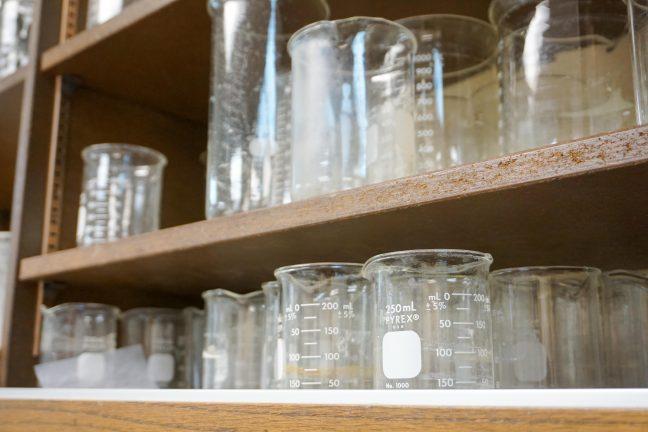With greenhouse gas emissions at an all time high, alternative energy sources will be increasingly important in the trek towards carbon neutrality. One new chemical fuel mechanism may have the potential to stand out above the rest — ammonia.
A recent paper published Nov. 8 in “Nature Chemistry” explores a new mechanism for producing nitrogen gas from ammonia with a metal catalyst. The reaction occurs spontaneously under mild conditions, meaning it releases energy that could be captured and used, an author on the paper and professor in inorganic chemistry John Berry said.
“Right now the world runs on carbon,” Berry said. “And there are other elements in the periodic table. We’d really like to see if we can do something with nitrogen — that I think would be my big picture.”
The Berry Group studies transition metal chemistry, and this project started years back when a grad student discovered that ammonia could attach to this catalyst and release elemental nitrogen and water, Berry said.
Another author on the paper, grad student Michael Trenerry took this reaction to the next level. He discovered a way to get oxygen to react in the air to create ammonia that can react a second time to create more energy. The lab can then harness the energy created by splitting the reaction into separate cells and capturing the electron current between them.
In looking for a viable fuel economy from a chemical perspective, Trenerry looks to three components — sustainable input, or where the fuel comes from, sustainable output, or what products the fuel creates, and ease of use.
“In terms of the gasoline, it, of course, is easy to use,” Trenerry said. “We use it all the time, but it’s clearly not sustainable in terms of its outputs — it generates CO2 and greenhouse gases. And it’s not sustainable with its inputs, since there is a finite amount of fossil fuels we have available to us. Ammonia has the benefit of being carbon-free. So it has very sustainable outputs.”
The future of this reaction will look to improve on creating a sustainable input by generating ammonia from a more environmentally friendly source. While free of carbon, the production of ammonia requires hydrogen gas, which is generated from burning natural gasses, Trenerry said, so sustainable inputs could look to collect hydrogen from electrolysis of water, rather than fossil fuels.
Additionally, this particular reaction has not been directly applied to a fuel cell yet, but similar reactions are being used in fuel cells. A current initiative will install the world’s first ammonia fuel cell on a ship by 2024.
New methods for sustainable energy sources will become increasingly important, and ammonia is just getting started as a fuel source, Trennery said.
“This is something new, in a way — a new method to harness energy from ammonia,” Trennery said. “That just gives us another tool in our toolbox for green energy in the future.”


